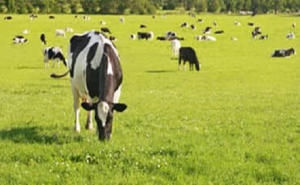
Milk production growth in the Big 7 dairy export regions (Argentina, Brazil, Uruguay, Australia, New Zealand, the European Union 27, and the United States) contracted year-on-year in Q3 and Q4 2021. These regions continued to post year-over-year declines through the first two quarters of 2022, and, it’s likely they will post a fifth quarter year-over-year decrease in Q3 2022, before moving into positive territory in Q4 2022. But even this gain is lackluster, offsetting just over half of the Q4 2021 decrease.

This current milk production “recession” harkens back to 2016. Milk production growth in 2016 within the European Union, which produces about 55 percent more milk than the U.S. and accounts for nearly 30 percent of global trade, fell by a sizeable volume during the second half of that year. This decline was driven by an effective European policy that provided monetary payments to dairy producers that reduced milk production.
In contrast, it’s important to note that the latest global milk production recession was triggered by reduced profitability and weather-related factors. Looking forward, new government regulations/policies in the EU are expected to curb milk production growth, but implementation of those policies is not expected until after 2025.
Since 2H 2021, dairy farmers in Europe, Oceania, the United States, and South America have struggled to increase milk production, not because of policy changes but rather due to weak margins and/or climate conditions. Rabobank estimates milk production growth in the Big-7 regions to decline by 1.7 percent YOY in 1H 2022. Positive year-on-year growth – versus a low comparable – is anticipated in 2H 2022, but still resulting in an estimated -0.7 percent loss for 2022. Preliminary forecasts for 2023 suggest a below-trend gain of 0.6 percent.
High and even record-high farmgate milk prices across most regions have not guaranteed production growth. Milk producers around the globe are facing significantly elevated corn, soybean and alfalfa costs as well as weather disruptions in certain areas, notably Oceania and South America. Overall inflation pressures in energy fuel and wages are also impacting profitability across the Big-7. Despite higher milk prices, milk production growth and the feed costs scenario remain challenging.Structural issues could limit the rebound in milk production growth. The current slowdown in global milk output is directly related to higher costs of production and weather events. In the past, production has recovered and surpassed previous peaks. However, structural issues will limit a significant rebound in production this time from some key exporters. Dairy herds in New Zealand and Europe have limited scope for growth and are more likely to contract under current and proposed regulations and environmental pressures. In South America, competition from grains and oilseeds for land and capital continues to intensify, limiting dairy expansions. That leaves the United States in an enviable position, poised for market growth with additional processing capacity coming online by 2025. Until then, global milk production recessions could be more common.























